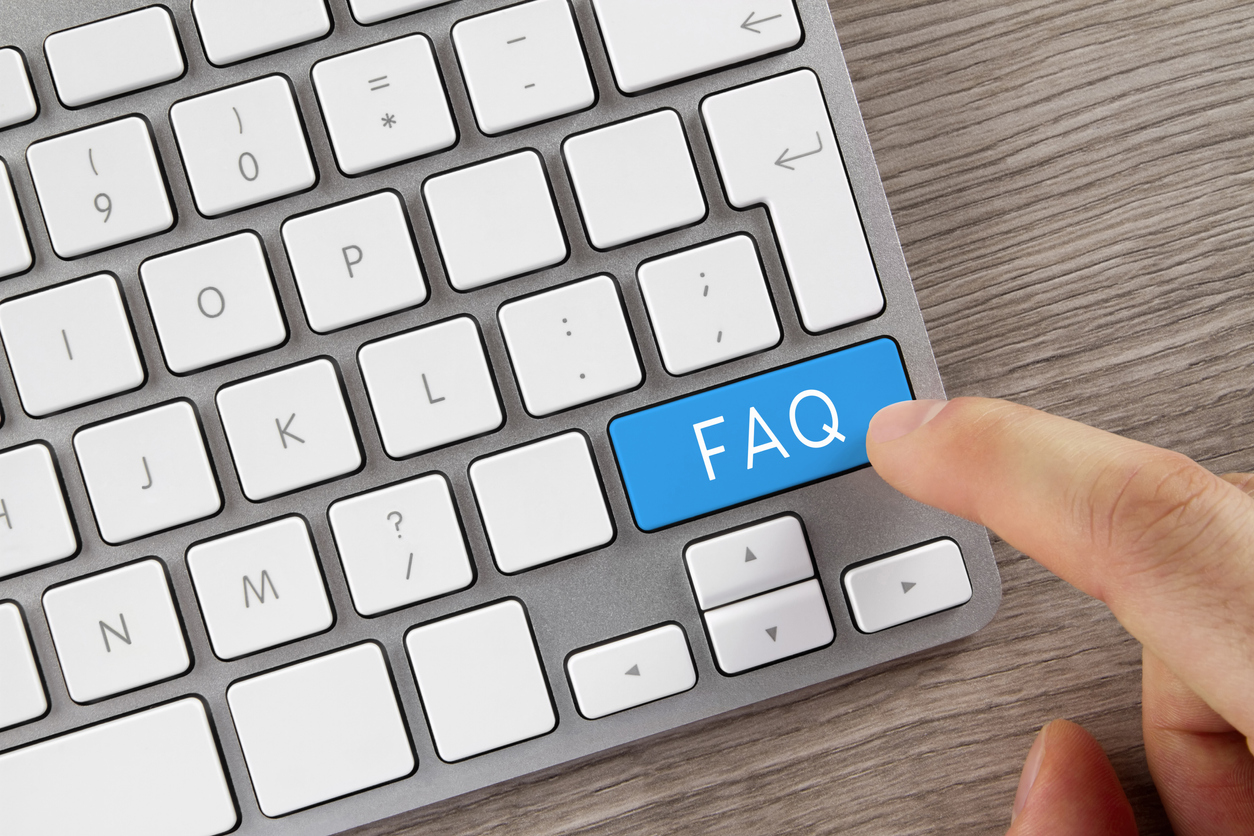
Although they were announced at the 2018 Google I/O conference, it wasn’t until the 2019 conference that Google finally launched two of their newest SERP features: FAQ results and How-To results. Of course, with every new change that Google deploys onto their search engine, SEO professionals are forced to adapt their strategy to take advantage or risk falling behind. These SERP features utilize new types of structured data to identify content and add it into search results. So, what are FAQ and How-To results, and how can you mark up your website’s pages so they include the structured data that Google’s looking for? Let’s take a look at the news and dive into how it all works.
What is FAQ Search Structured Data?
Google has designed FAQ results to appear underneath a single FAQ page’s search result in a drop-down list format. FAQ structured data can only be added to an FAQ page that provides a list of frequently asked questions and answers on a specific topic. Google then pulls those questions and answers out (once you’ve properly marked them up) and adds them to your listing on SERPs. Your site’s content is able to show up in these rich results via structured data, which includes adding marks in the code of your page that identify different parts of your content for Google to better understand and classify.
The main motivation behind Google adding this new SERP (search engine result page) feature is for user convenience. Now, you don’t even have to visit an FAQ page to see the answer to your question, since it’s available directly from the SERP. While this is good news for users, it’s not necessarily the best for website owners, since users will get the information they need without actually producing traffic towards the website. Because of this, webmasters will need to find new ways to optimize FAQ answers to bring in more traffic.
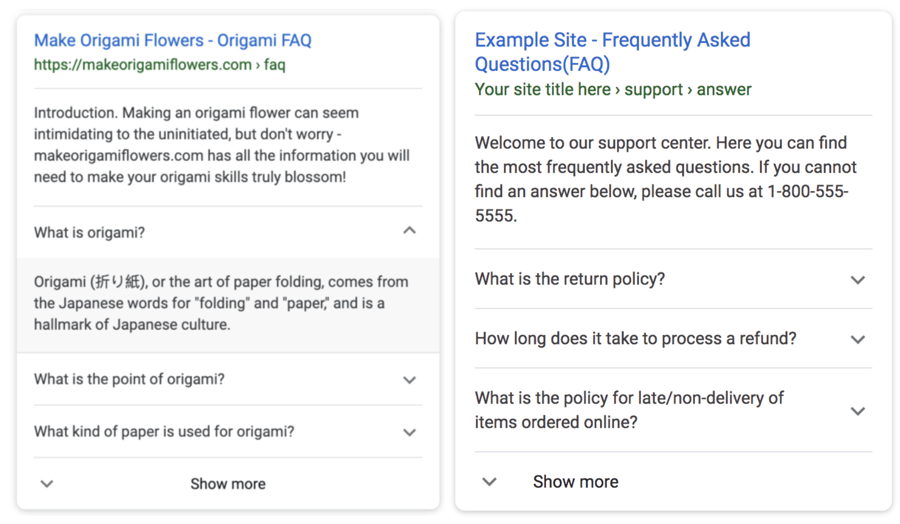
FAQ results, by default, show 3 questions with drop-down answers. But you can have up to 10 questions on the result, which are hidden by a “See more” drop-down. With as many as 10 questions, and a default of 3, FAQ page results take up a lot of room on SERPS; this ends up pushing down results that may have been higher before the feature was implemented. Unfortunately, this may cause first-page results to be pushed down, dramatically affecting organic traffic. So, if you’re trying to rank on a SERP with other FAQ pages, it’s vital that you optimize for the FAQ result feature or else risk being overshadowed.
It should be noted that FAQ pages are not the same as QA pages, which are mainly reserved for forums or other page types that allow users to submit their own answers to questions. QA pages have their own structured data and show up in results differently; you can read more about that on Googles developer’s page.
What is How-To Search Structured Data?
Similar to FAQ results, How-To rich results use structured data to act as a shortcut to essential information for searchers, specifically for How-To articles and pages. These results are designed to give searchers instructions on how to accomplish a certain task in a step-by-step fashion directly in the results page, meaning users don’t have to navigate to the source page to get what they need. Each step can either be text-based or visual (using photos or videos) with the layout depending on its format. For example, text-based steps will show up as a list of drop-down menus, while photo-based steps will be displayed as an image gallery that can be slid to the left to reveal more steps.
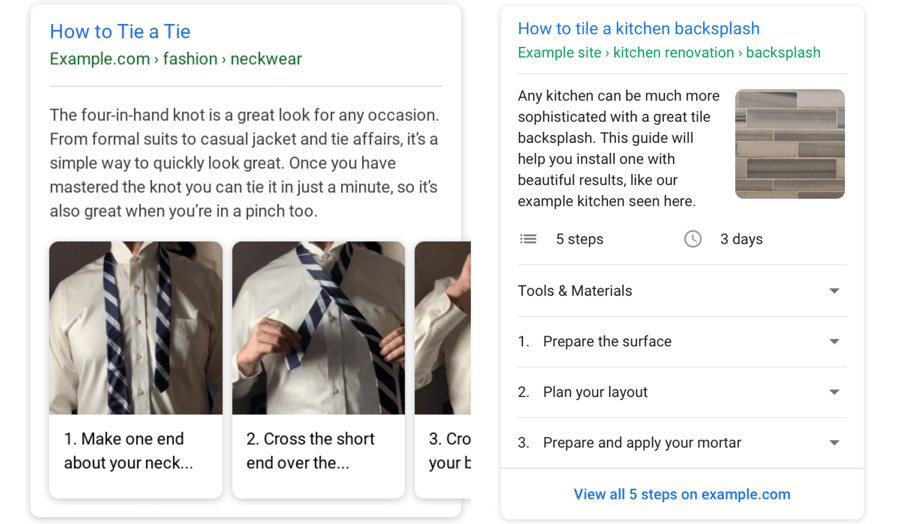
Of course, just like FAQ results, this means that some site-owners may end up getting less traffic as users simply lack the need to actually visit their site. While it’s definitely a benefit that a site’s result has a larger footprint with an added How-To underneath it, there’s debate over whether that larger space will actually result in more site traffic.
Do note, however, that How-To results are different from recipe results, which use a different type of structured data and are designed differently in the result itself. Check out Google’s developer page on recipe structured data for more information on that.
How to Optimize Your Site for Google’s New Structured Data
If you’re running an online store and you’re wondering how you can take advantage of these new features and structured, then there’s a few different ways you can do that:
- Add a product Q&A to your product pages.
- Write How-To blog posts that show how to use your products.
- Optimize your site’s FAQ page, or create FAQ pages for specific topics i.e. shipping or payment methods.
- Add links to other site pages in the answers to your FAQ questions to boost traffic.
- Encourage engagement by using photos or videos in your How-To steps.
But, in order for your page content to be eligible for display as a rich FAQ or How-To result, you need to make sure your site pages’ structured data is properly marking content with the following required properties:
FAQ Page Required Properties
- FAQPage: Include this type one time on the page to indicate that it’s an FAQ with answered questions.
- mainEntity: Include the “Question” type elements that comprise the list of answered questions.
- acceptedAnswer: Include the “Answer” type element as the answer to the question (one per question).
- name: Include the “Text” type element to represent the full text of the question.
- text: Include the “Text” type element to represent the full answer to the question.
How-To Required Properties
- HowTo: Include this type one time on the page to indicate that it contains a How-To.
- name: Include the “Text” type element as the title of the how-to.
- step: Include the “HowToStep” or “HowToSection” type elements that comprise all of the how-to instructions. (Mark up will be different for steps with text, directions and tips, and steps alone.)
- HowToSupply/HowToTool: Include these types to complete the how-to by defining the tools or supplies needed.
- name: Include the “Text” type element as the name of the supply or tool.
- HowToDirection/HowToTip: Include these types to describe directions or tips.
- text: Include the “Text” type element for the text of the direction or tip.
Note: If your store is on 3dcart, then you don’t need to add any extra mark ups to adapt to Google’s new FAQ structured data result feature. With the Product Q&A module, all of your questions and answers have already been marked up to correspond with Google’s required properties. You can find out more about the Product Q&A module on our knowledge base.
Google has also provided a few guidelines as to the content that’s acceptable for them.
FAQ Result Content Guidelines
- Do not add FAQ structured data to any page that allows users to submit answers to either a single question or multiple questions. This includes forum pages, support pages and product pages.
- Do add FAQ structured data to an FAQ page that’s written by you and doesn’t allow users to submit their own answers. You can also add FAQ structured data to a product support page as long as it doesn’t allow UGC.
- Do not use FAQ pages that you want to use FAQ result structured data for advertising. It should be used for educational reasons regarding a specific topic.
- Any content that’s marked as FAQ needs to be visible to the user on the source page, and not hidden from everyone but Google’s algorithm.
- FAQ results content must not include any content that is obscene, profane, sexually explicit, graphically violent, promotion of dangerous and/or illegal activities, or hateful and/or harassing language.
How-To Result Content Guidelines
- Do not use How-To pages that you want to use How-To result structured data for advertising. The content in your How-To result should be educational and instructional.
- Be sure to add How-To structured data to all of the tools and materials needed to complete the given task, as these will be included in the result.
- Only mark source steps as “HowToStep” and do not mark non-step data, such as your introduction or conclusion text, as steps.
- If you’re using images for each step, be sure to not use the same image in more than one step on the same How-To.
- How-To results content must not include any content from the previous list of forbidden FAQ result content.
Optimizing for Google Assistant
A major benefit of this new result feature change is the fact that both FAQ results and How-To results are perfectly optimized for use with Google Assistant. As voice search becomes more and more popular, it’s becoming imperative that websites optimize their content so that they show up as the first result. By marking up your FAQ and How-To pages, your result will have a much higher chance of showing up when a user asks a question in voice search about your topic. Here’s how FAQ results and How-To results look with Google Assistant:
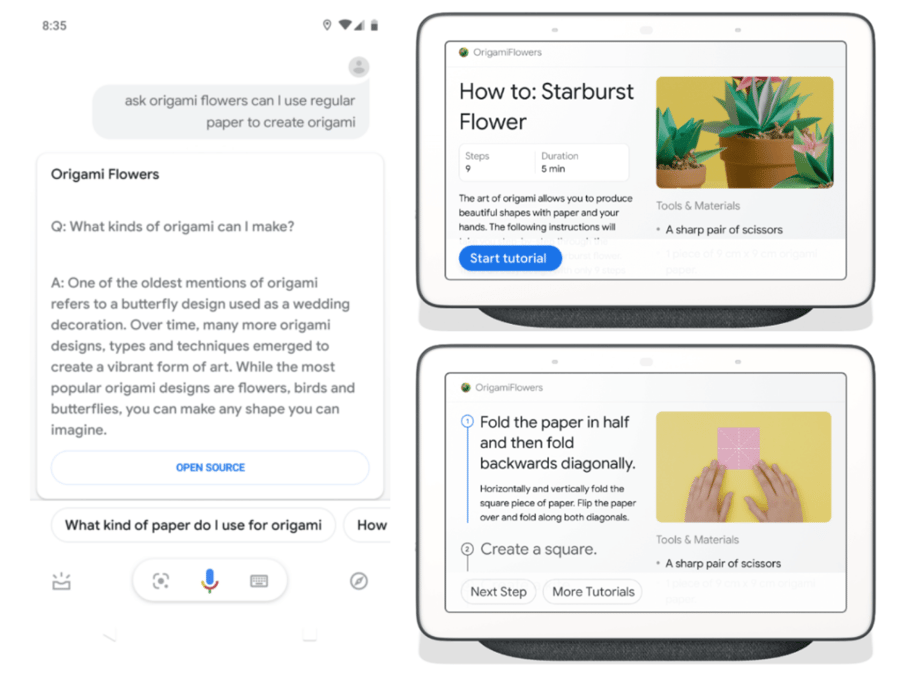
Wrapping Up
It goes without saying that Google’s new FAQ and How-To structured data updates have shaken up the SEO world quite a bit. Since Google is constantly evolving its site and algorithm to be more useful and helpful for users, website owners need to learn how to adapt to these changes so that they can still rank high and maintain traffic on SERPs. Search is consistently moving towards mobile and voice search too, with new features like this proving that.
Other new SERP features, such as the rich feature snippets, have sparked similar debate as to how beneficial or detrimental they can be for SEO due to the extent they shake up the current norm. With new features like this, it’s important to take advantage of them and strategize how you can best optimize your listings to increase traffic, whether it’s in spite of or because of changes.


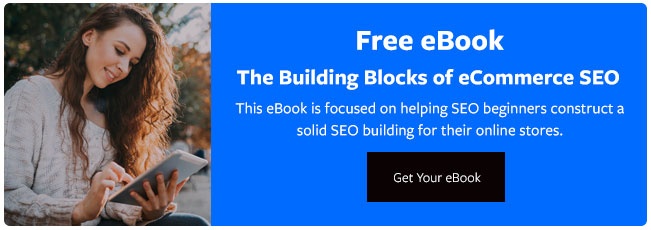


Leave a reply or comment below